
Villa is a genus of flies belonging to the bee-fly family (Bombyliidae). They range in size from 5 to 17 millimetres, and have typically rounded heads. The males of some species have a brilliant mat of silvery patagial scales. About 270 Villa species are found on all continents except Antarctica. They can be distinguished from similar genera (Hemipenthes) by their wing venation.
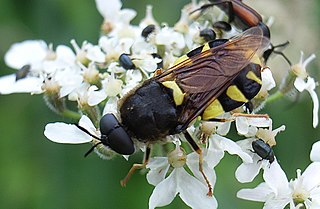
Stratiomys chamaeleon, the clubbed general, is a European species of soldier fly.
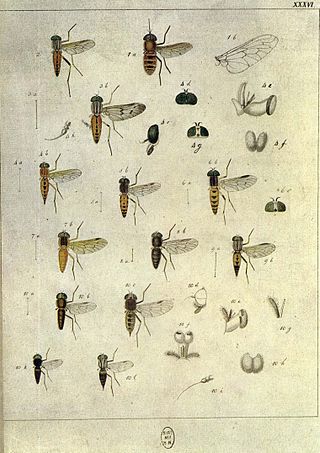
Pangonius is a genus within the horse-fly family (Tabanidae), often misspelled as Pangonia; Latreille originally published the name as Pangonius in 1802, emending it in 1804 to Pangonia, but the emendation is not valid under the International Code of Zoological Nomenclature. Some species that were earlier placed in this genus are now in the genus Philoliche.

Rhamphomyia sulcata is a species of dance flies, in the fly family Empididae. It is included in the subgenus Rhamphomyia. It is found in most of Europe, except the Balkan Peninsula.
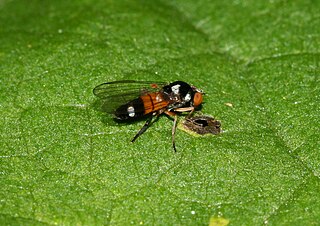
Callomyia is a genus of flies in the family Platypezidae. Some species can be found in Belgium.

Callomyia elegans is a species of fly in the genus Callomyia found in Europe.

Compsilura is a genus of tachinid flies in the family Tachinidae from Mozambique, Malawi and South Africa.

Oplodontha viridula, the common green colonel, is a European species of soldier fly.
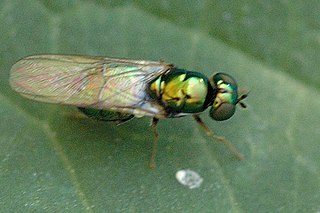
Microchrysa polita, the black-horned gem, is a species of soldier fly found in Europe, Asia, and North America.
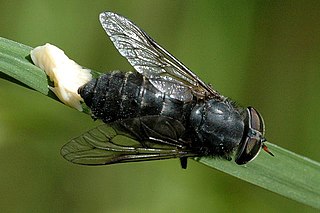
Hybomitra micans is a species of horse flies in the family Tabanidae.
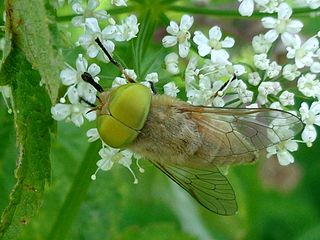
Atylotus fulvus is a species of 'horse flies' belonging to the family Tabanidae.

Campylocheta inepta is a species of fly in the family Tachinidae. It is found in the Palearctic. This species is a parasite of mainly Geometridae larvae but also several other families of Lepidoptera associated with heathland and moorland. Campylocheta inepta occurs in montane areas with pine forests in most of Europe but the species is also found in lower areas in central Europe and Spain.

Hybos femoratus is a species of fly in the family Hybotidae. It is found in the Palearctic.
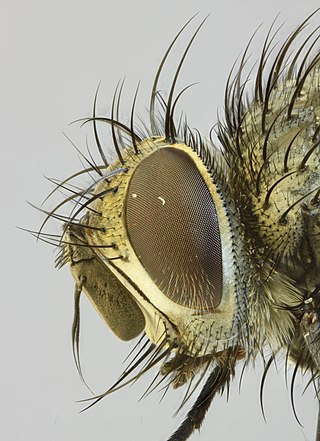
Phryxe nemea is a species of fly in the family Tachinidae.

Platypalpus luteus is a species of fly in the family Hybotidae. It is found in the Palearctic.
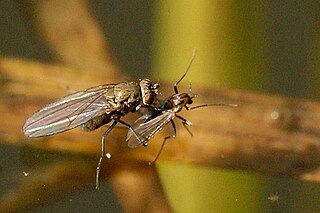
Notiphila riparia is a species of fly in the family Ephydridae. It is found in the Palearctic . jizz-Face often grey white, rarely yellow. May–September, - Common on water edge vegetation(pools and streams). All Europe.Urals.Near East.

Xylophagus is a genus of flies in the family Xylophagidae.

Villa cingulata is a Palearctic species of bee fly in the family Bombyliidae.

Paraplatypeza atra is a species of fly in the genus Paraplatypeza.
Tachypeza is a genus of flies in the family Hybotidae.




















